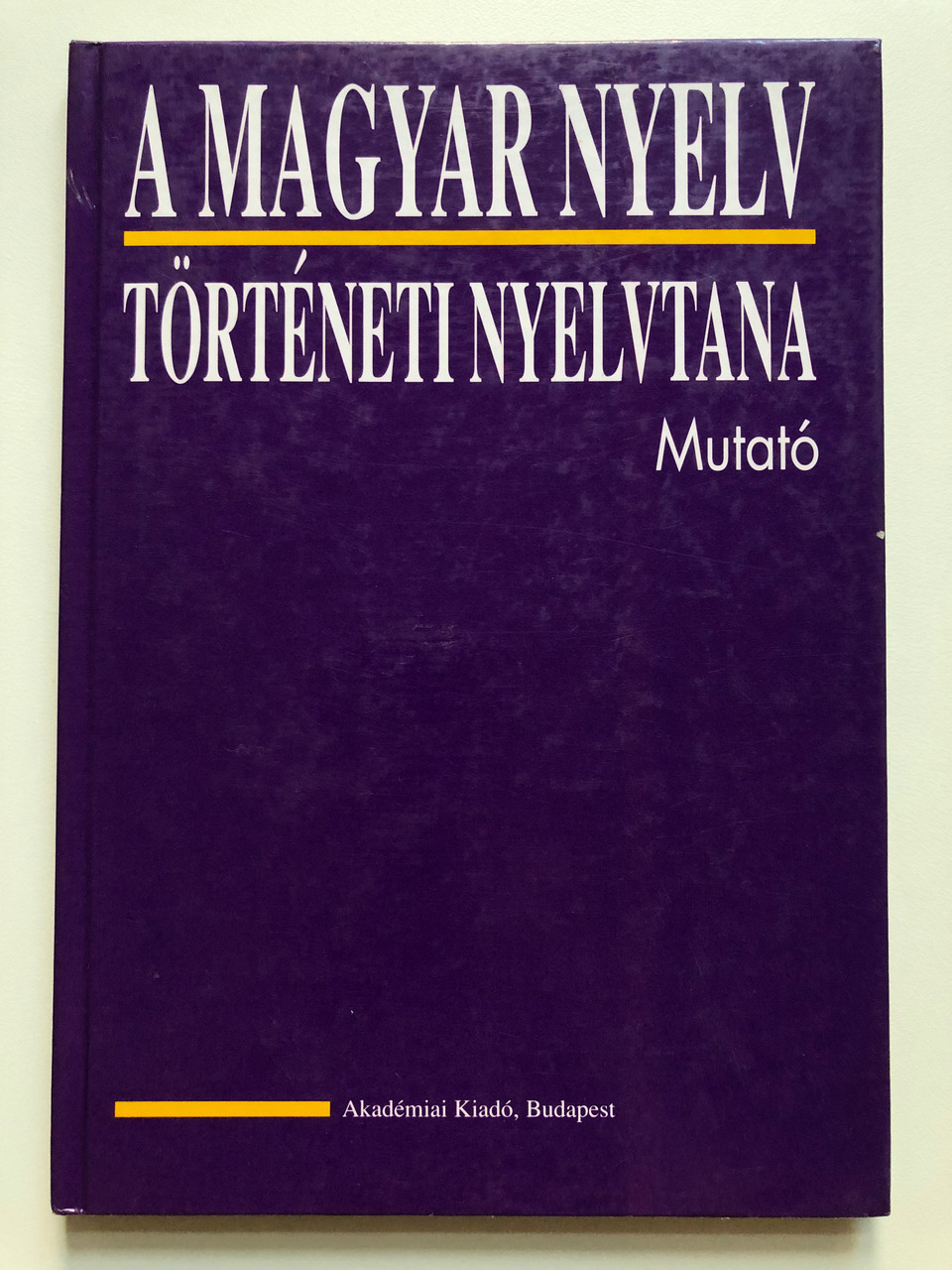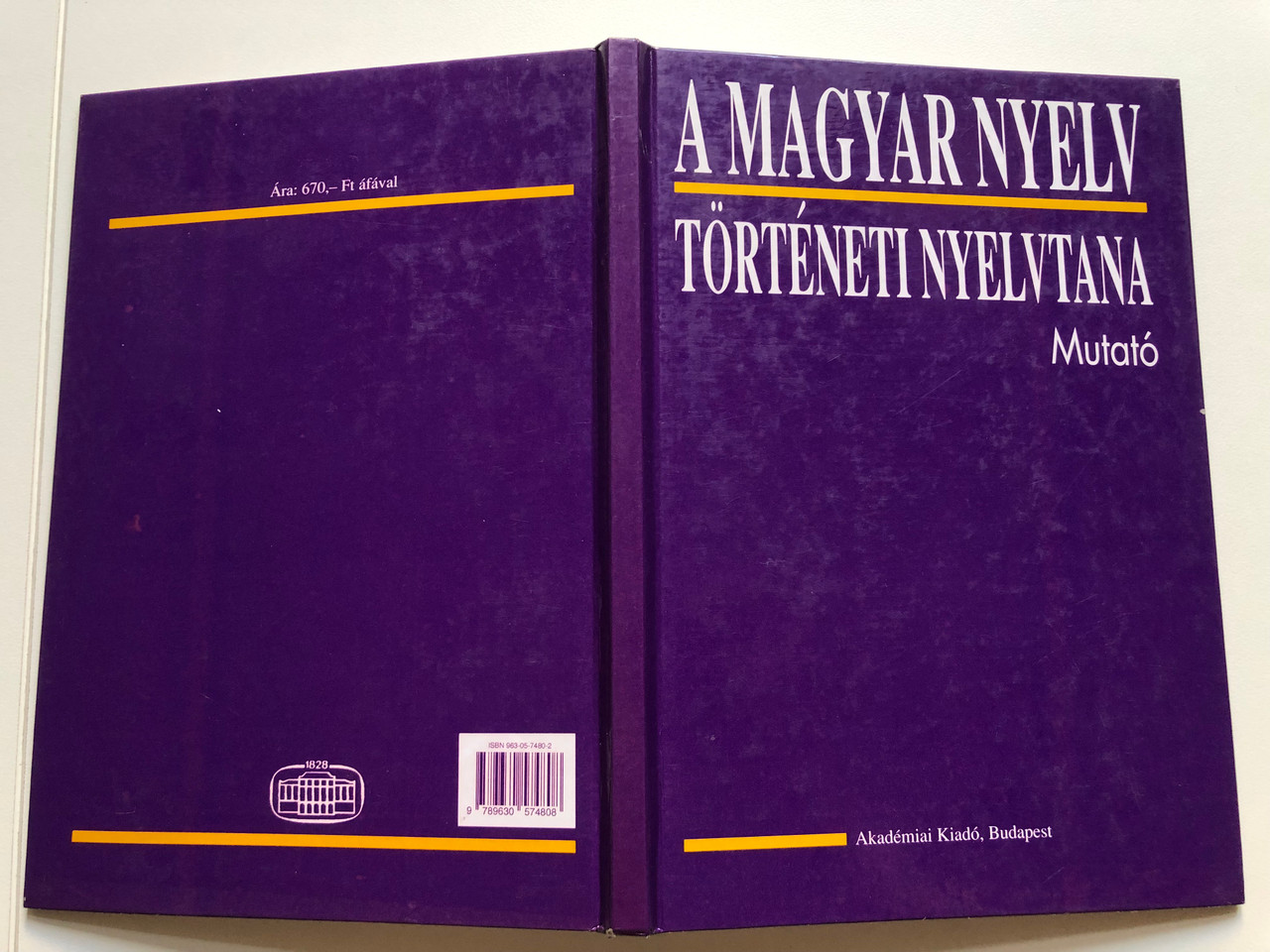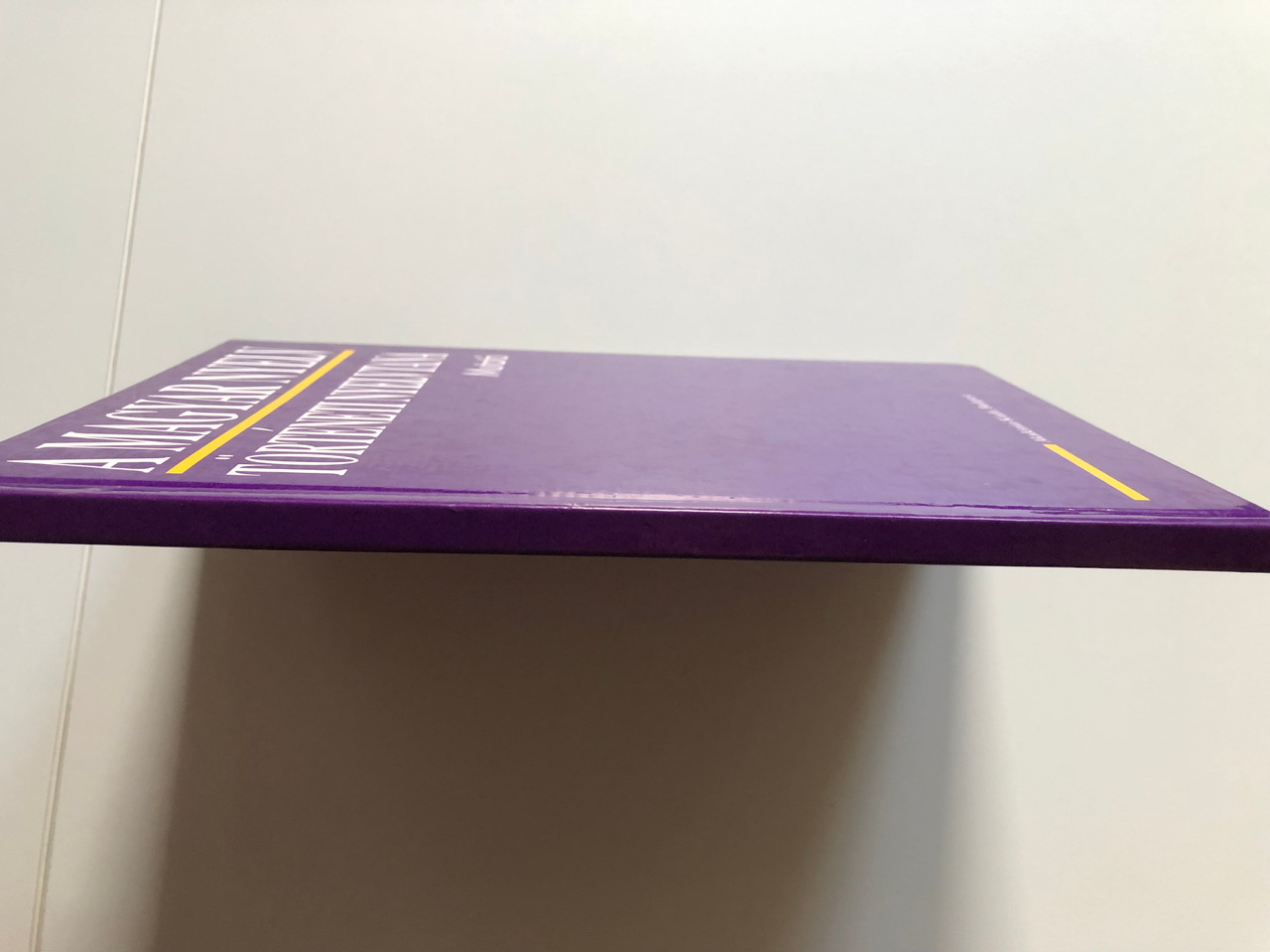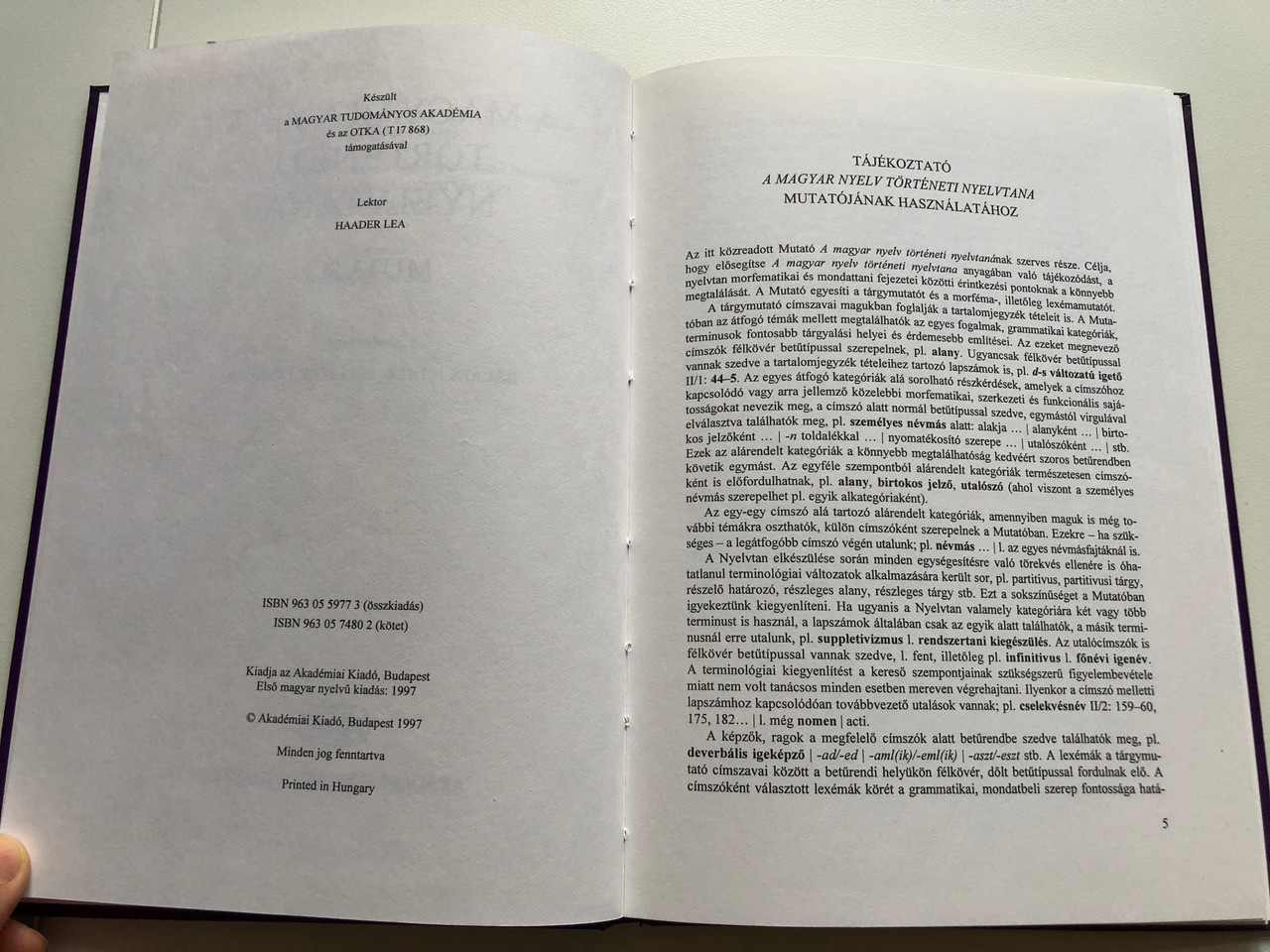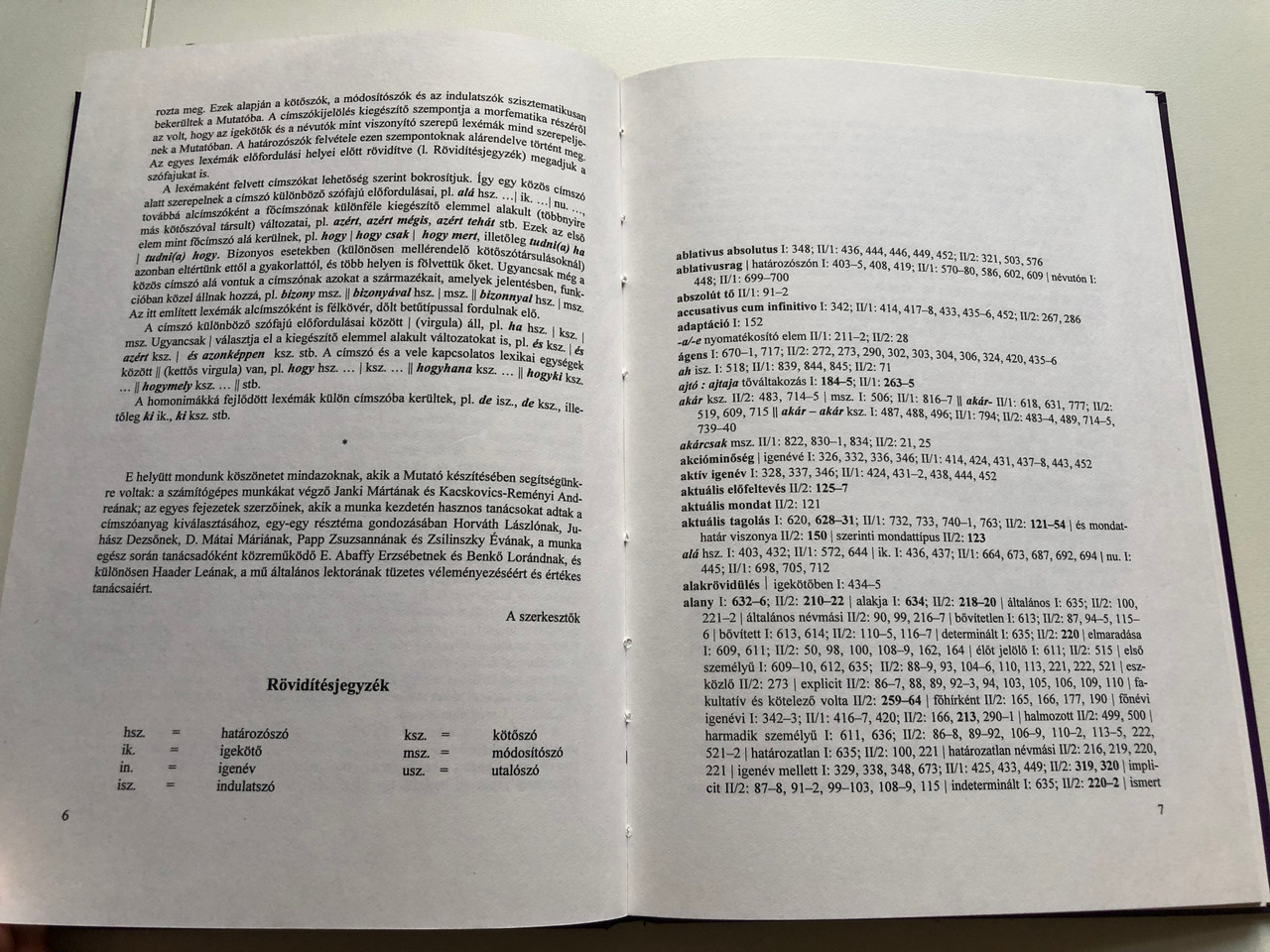Description
A Magyar Nyelv Történeti Nyelvtana | Historical Grammar of the Hungarian Language
Product Information
- UPC: 9630559773
- ISBN-10 (Release): 9630559773
- ISBN-10: 9630574802
- Publisher: Akadémiai Kiadó, Budapest
- Publication Year: First edition in Hungarian: 1997
- Language: Hungarian
Overview
"A Magyar Nyelv Történeti Nyelvtana" is a comprehensive and scholarly exploration of the historical grammar of the Hungarian language, edited by Balázs Judit and Zelliger Erzsébet. This foundational work provides an in-depth analysis of the various grammatical structures and linguistic phenomena that characterize the Hungarian language throughout its history.
The grammar is rich in material and offers valuable insights into both morphematic and syntactic aspects. The index serves as an integral part of the work, designed to facilitate navigation through the various topics covered. It includes significant discussion points and highlights individual concepts, categories, and terms, making it an essential reference for linguists, educators, and students of the Hungarian language. The book organizes its content into general themes, each accompanied by subordinate categories that detail specific features corresponding to the headings. These subordinate categories are presented in a clear and accessible manner, ensuring that readers can easily find the information they seek. Additionally, the index addresses variations in terminology that may arise throughout the text, providing clarity and consistency.
Hungarian Translation - Overview (Attekintes)
"A Magyar Nyelv Történeti Nyelvtana" egy átfogó és tudományos felfedezése a magyar nyelv történeti nyelvtanának, Balázs Judit és Zelliger Erzsébet szerkesztésében. Ez az alapvető munka mélyreható elemzést nyújt a magyar nyelv különféle grammatikai struktúráiról és nyelvi jelenségeiről, amelyek a történelem során jellemezték.
A nyelvtan gazdag anyagban bővelkedik, és értékes betekintést nyújt a morfémás és szintaktikai aspektusokba. Az index a munka szerves részét képezi, amelyet úgy terveztek, hogy megkönnyítse a navigációt a különböző témák között. Tartalmaz jelentős vitapontokat, és kiemeli az egyes fogalmakat, kategóriákat és kifejezéseket, így elengedhetetlen hivatkozás nyelvészek, oktatók és a magyar nyelv hallgatói számára. A könyv tartalmát általános témákra osztja, mindegyikhez alárendelt kategóriák társulnak, amelyek részletezik a címekhez kapcsolódó konkrét jellemzőket. Ezeket az alárendelt kategóriákat világosan és hozzáférhető módon mutatják be, biztosítva, hogy az olvasók könnyen megtalálják a keresett információt. Emellett az index foglalkozik a szöveg során felmerülő terminológiai eltérésekkel is, világosságot és következetességet biztosítva.
Product Features
- Format: Paperback
- Language: Hungarian
- Publisher: Akadémiai Kiadó
- Publication Year: 1997 (First edition)
- Content Focus: Historical grammar and linguistic analysis of the Hungarian language, with an extensive index for reference.
Interesting Facts
- Scholarly Resource: This work is a vital resource for anyone studying the evolution of the Hungarian language, providing insights into its grammatical history and structural changes.
- Terminological Clarity: The index addresses the complexity of terminology used throughout the text, ensuring that readers can easily navigate and understand various grammatical terms.
- Comprehensive Coverage: The book spans a wide range of topics, making it a comprehensive guide for linguists and students alike.
Hungarian Translation - Interesting Facts (Erdekes Tenyek)
- Tudományos Forrás: Ez a munka alapvető forrást jelent bárki számára, aki a magyar nyelv fejlődését tanulmányozza, értékes betekintést nyújtva a nyelvtani történelembe és a szerkezeti változásokba.
- Terminológiai Világosság: Az index foglalkozik a szövegben használt terminológia összetettségével, biztosítva, hogy az olvasók könnyen navigálhassanak és megérthessék a különféle grammatikai kifejezéseket.
- Átfogó Lefedettség: A könyv széleskörű témákat ölel fel, így átfogó útmutatóként szolgál a nyelvészek és diákok számára egyaránt.
Publishers
Published by Akadémiai Kiadó, Budapest. All rights reserved under ISBN 9630559773.
We value your feedback! Share your experience with this product to help others make informed decisions. Your review is important to us!
Hashtags
English:
#HungarianGrammar #HistoricalGrammar #AkadémiaiKiadó #LinguisticResearch #HungarianLanguage
Hungarian (Cimkek):
#MagyarNyelvtan #TörténetiNyelvtan #AkadémiaiKiadó #NyelvészetiKutatás #MagyarNyelv

























